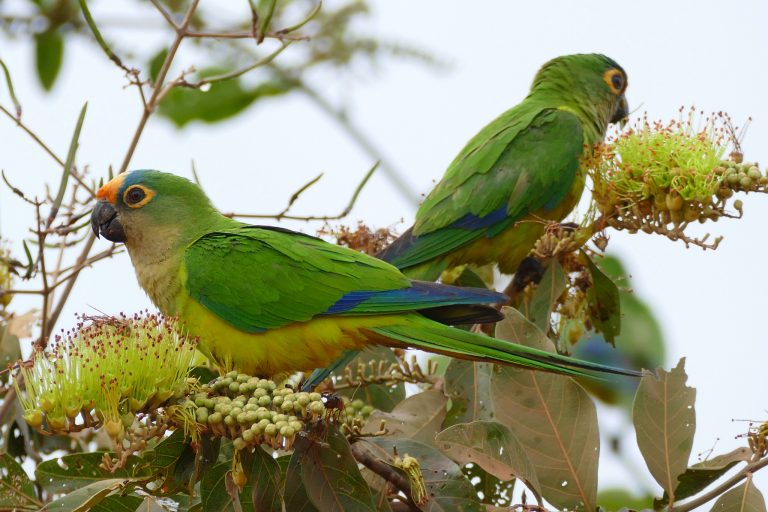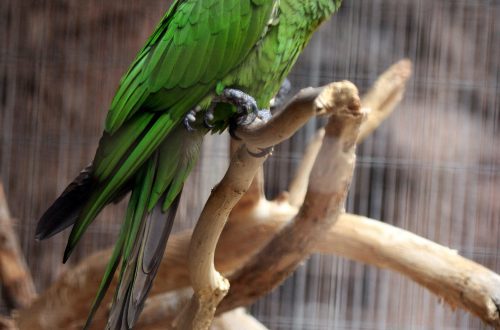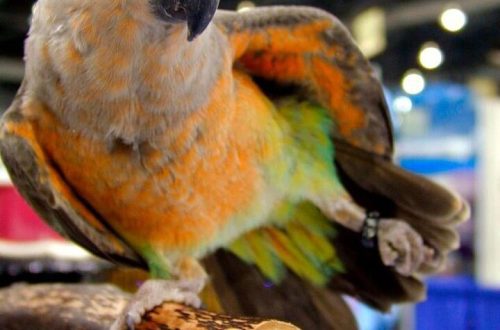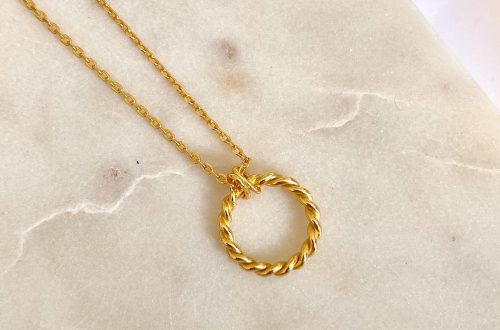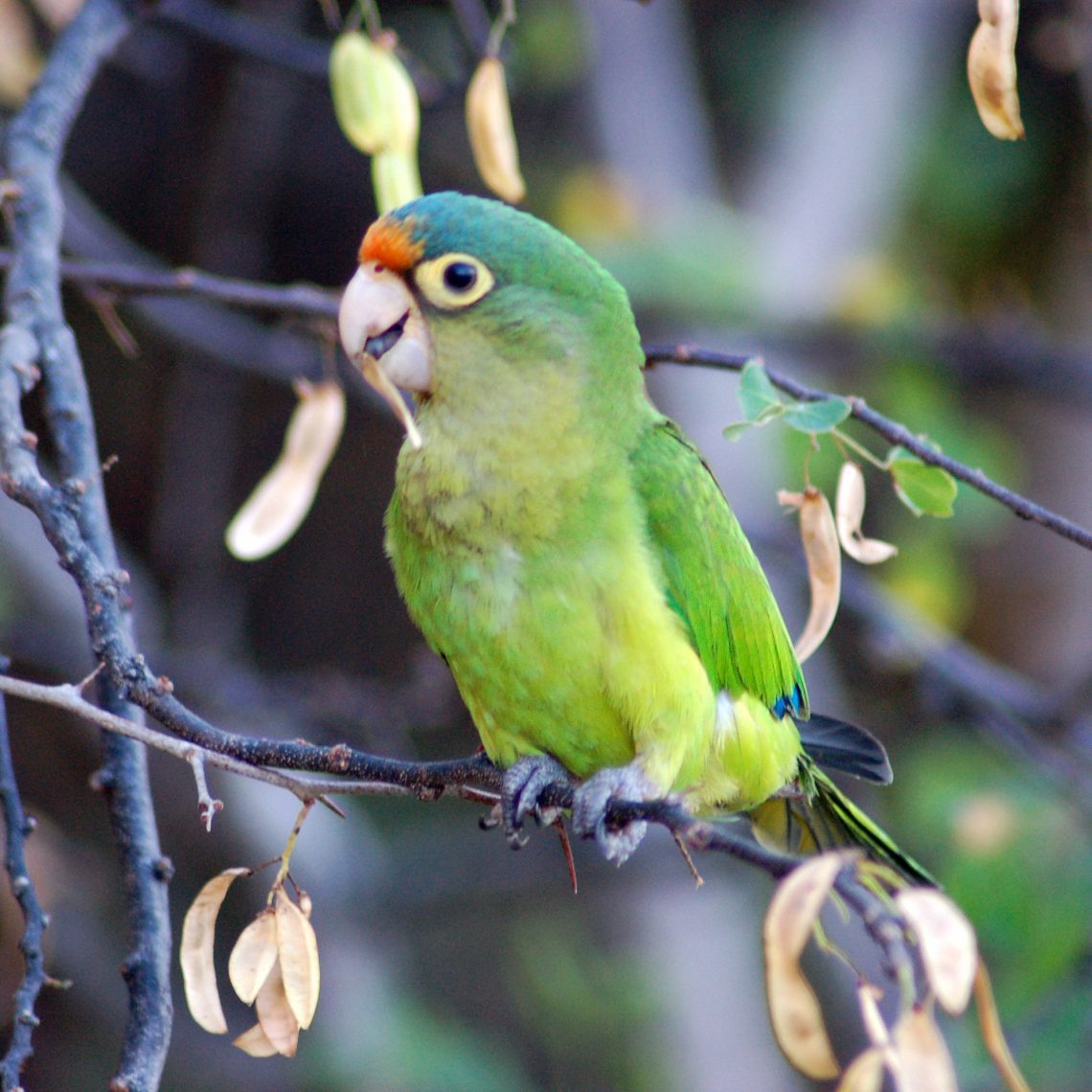
Orange-fronted Aratinga
Contents
Orange-fronted Aratinga (Eupsittula canicularis)
Order | Parrots |
family | Parrots |
Race | Aratingi |
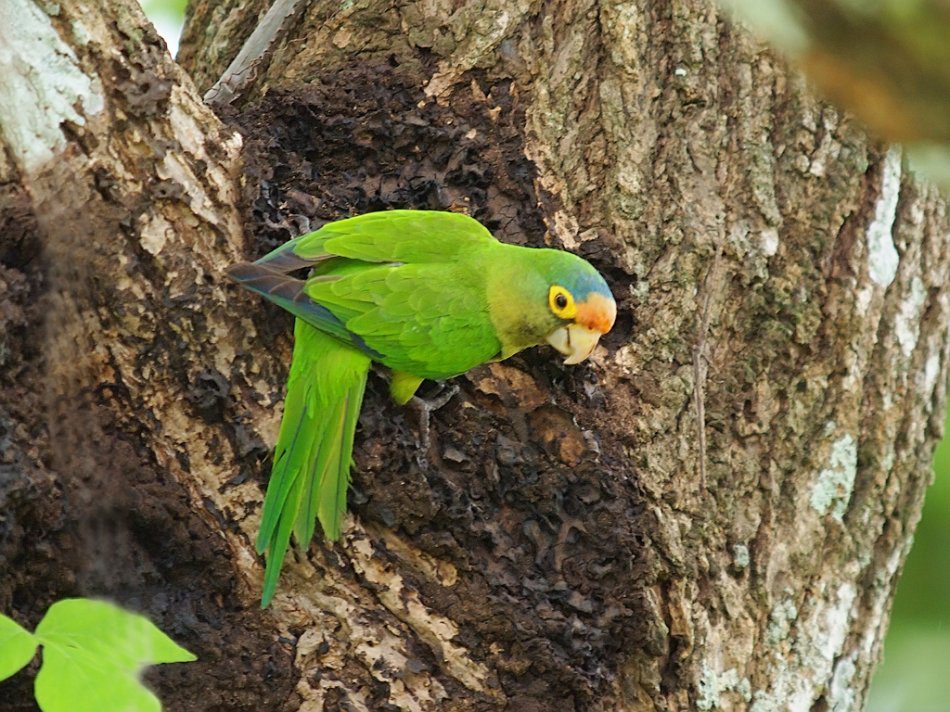
In the photo: orange-fronted aratinga. Photo: google.ru
Appearance of the orange-fronted aratinga
The orange-fronted aratinga is a long-tailed medium parrot with a body length of about 24 cm and a weight of up to 75 grams. The main color of the body is grassy green. The wings and tail are darker in color, and the chest is more olive. The flight feathers are blue-green, the undertail is yellowish. There is an orange spot on the forehead, bluish above. The beak is powerful, flesh-colored, the paws are gray. The periorbital ring is yellow and glabrous. The eyes are brown. Males and females of the orange-fronted aratinga are colored the same.
There are 3 known subspecies of the orange-fronted aratinga, which differ from each other in color elements and habitat.
The life expectancy of an orange-fronted aratinga with proper care is about 30 years.
The habitat of the orange-fronted aratingi and life in nature
The worldwide wild population of the orange-fronted aratinga is about 500.000 individuals. The species lives from Mexico to Costa Rica. Heights are about 1500 m above sea level. They prefer wooded areas and open areas with individual trees. They fly into arid and semi-arid lowlands, as well as into tropical forests.
Orange-fronted aratingas feed on seeds, fruits, and flowers. Often visit corn crops, eat bananas.
Usually outside the breeding season, orange-fronted aratingas gather in flocks of up to 50 individuals. Sometimes they arrange collective overnight stays, including with other species (some Amazons).
 In the photo: orange-haired aratingas. Photo: google.ru
In the photo: orange-haired aratingas. Photo: google.ruReproduction of orange-fronted aratingi
The breeding season for the orange-fronted aratinga is from January to May. Birds nest in hollows. The clutch usually contains 3-5 eggs. The female incubates for 23-24 days. The orange-fronted aratinga chicks leave the nest at about 7 weeks of age. They become completely independent in a few weeks. At this time, their parents feed them.



